I bet you’ve made a paper airplane or two in your life. Did you know that paper airplanes are a fun and easy way to teach kids of all ages STEM concepts? With just a few simple materials, you can create a variety of paper airplanes that can be used to explore concepts such as aerodynamics, gravity, and lift.
Yup, paper airplane science. Physics, to be more precise.
Who knew?!
I know ANYTHING is a lot more fun when it is hands-on, AND you can see how something works in the “real world.”
Paper airplane science is just the thing to make physics relatable to any age group.
So, let’s get started.
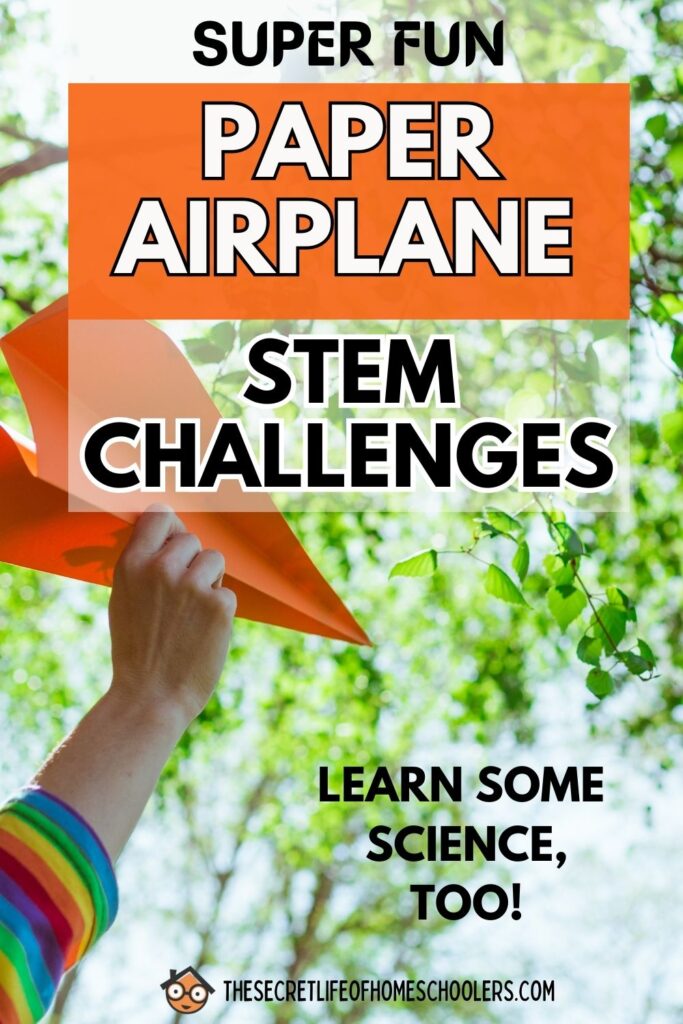
Paper Airplane Science
With anything, I always like to start simple and work up to the more complicated. So, I’d recommend starting with the most basic paper airplane design and building from there.
Starting with the basic design is helpful for two reasons.
- Kids experience success because it is familiar, making them less likely to become frustrated.
- A simple design also acts like the “control” in the experiment. You can test different concepts using the same design for more accurate results.
Basic Paper Airplane Design
Materials
- Paper
- Tape (optional)
- Optional: markers, crayons, or other art supplies
Instructions
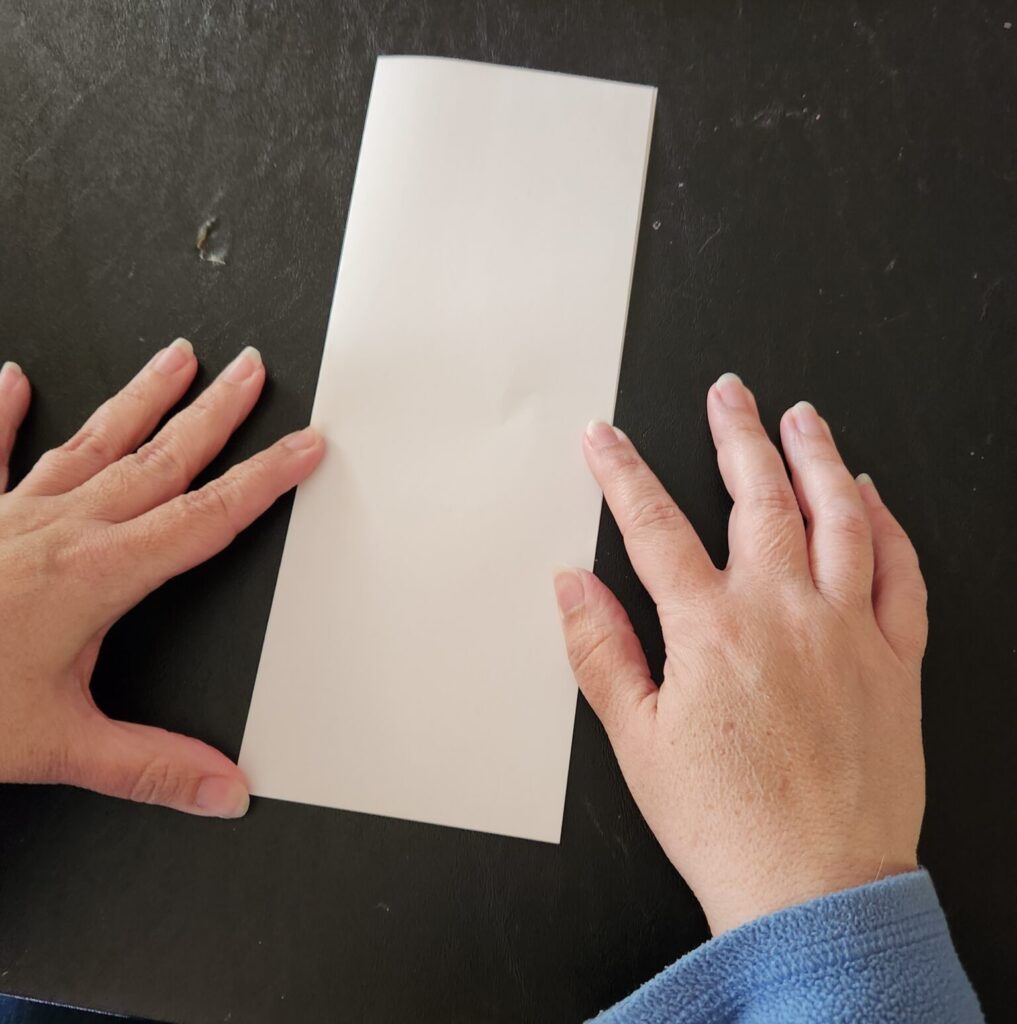
Fold a piece of paper in half lengthwise.
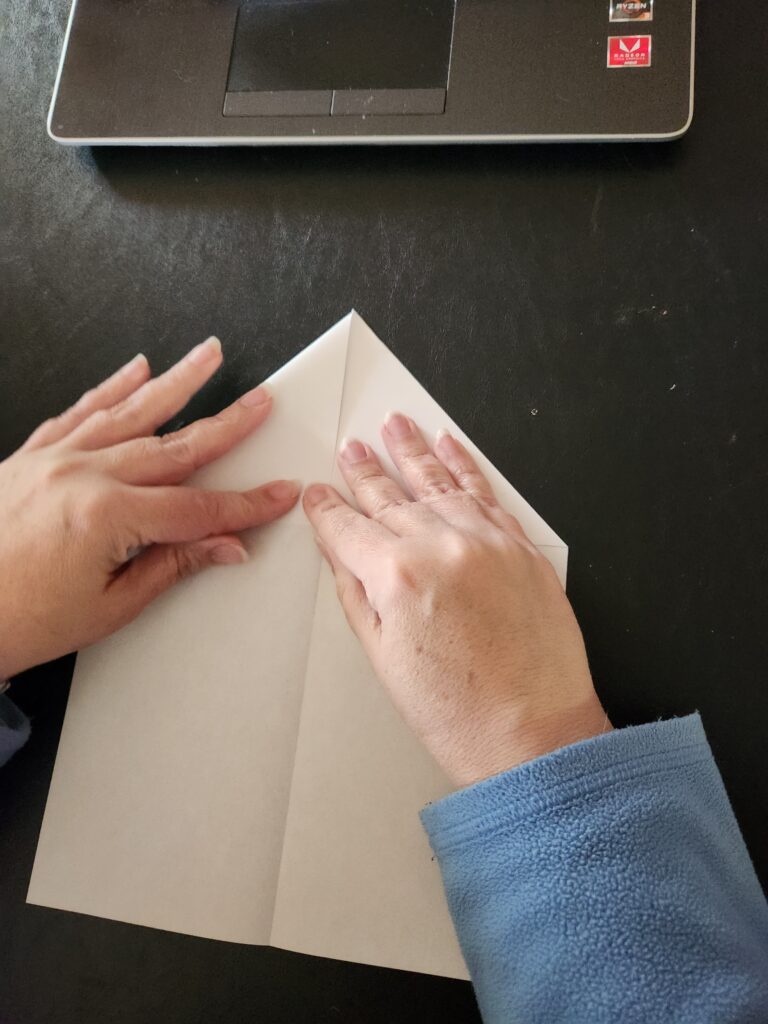
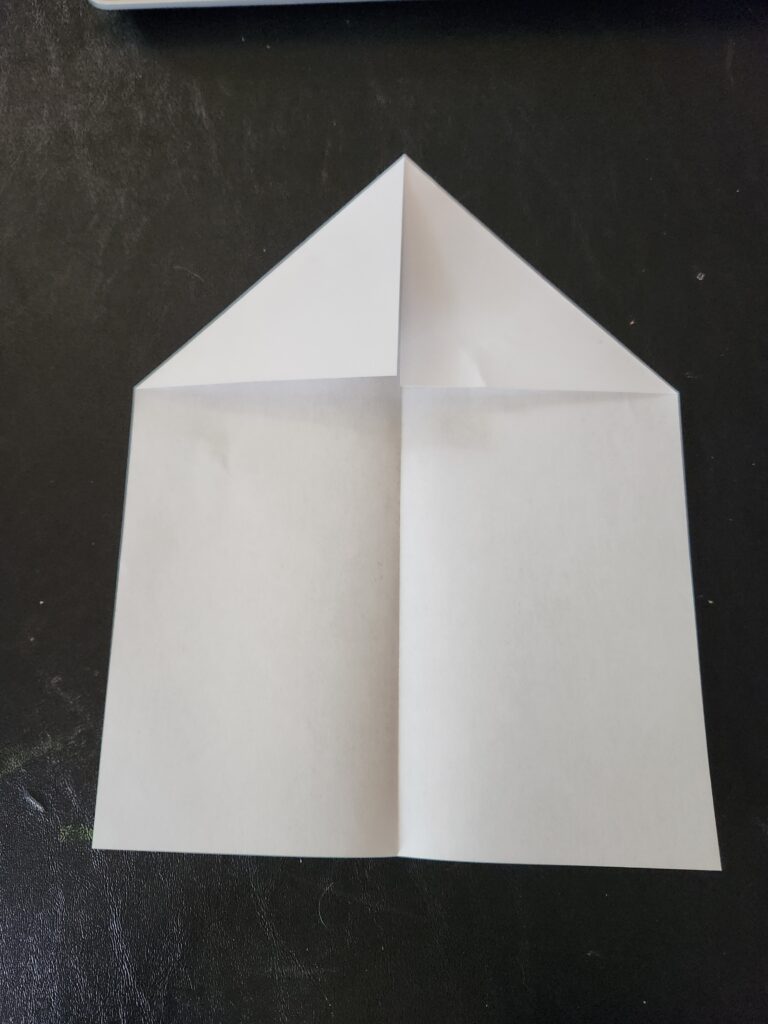
Next, open up the paper and fold the top corners down to the center crease.
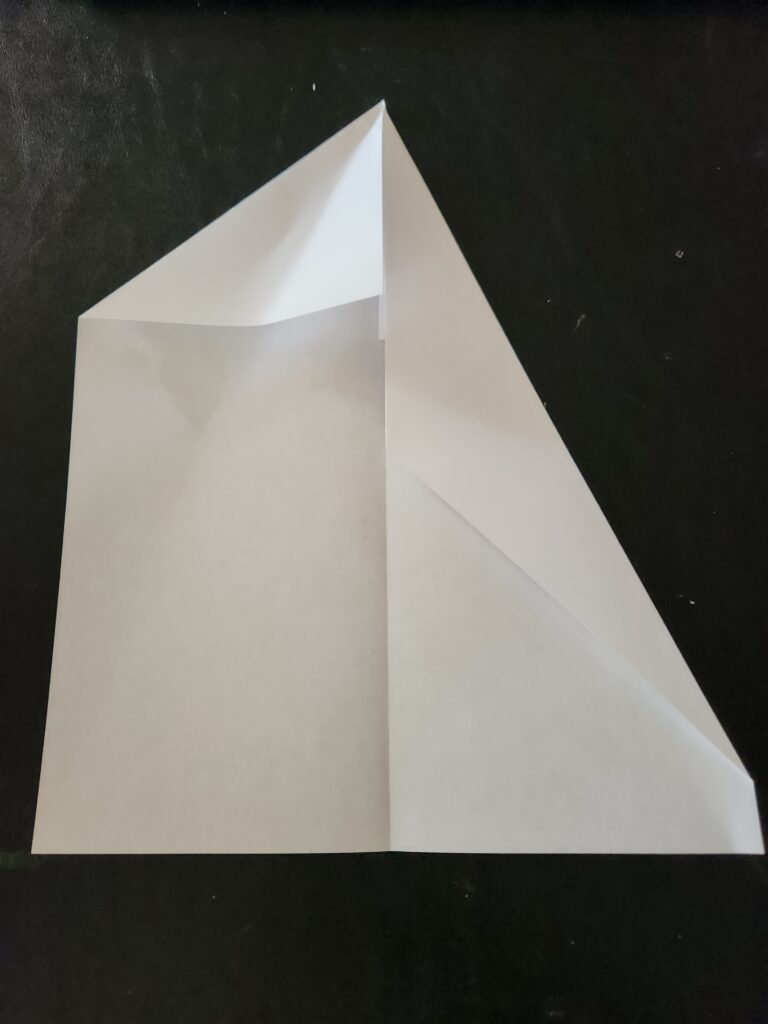
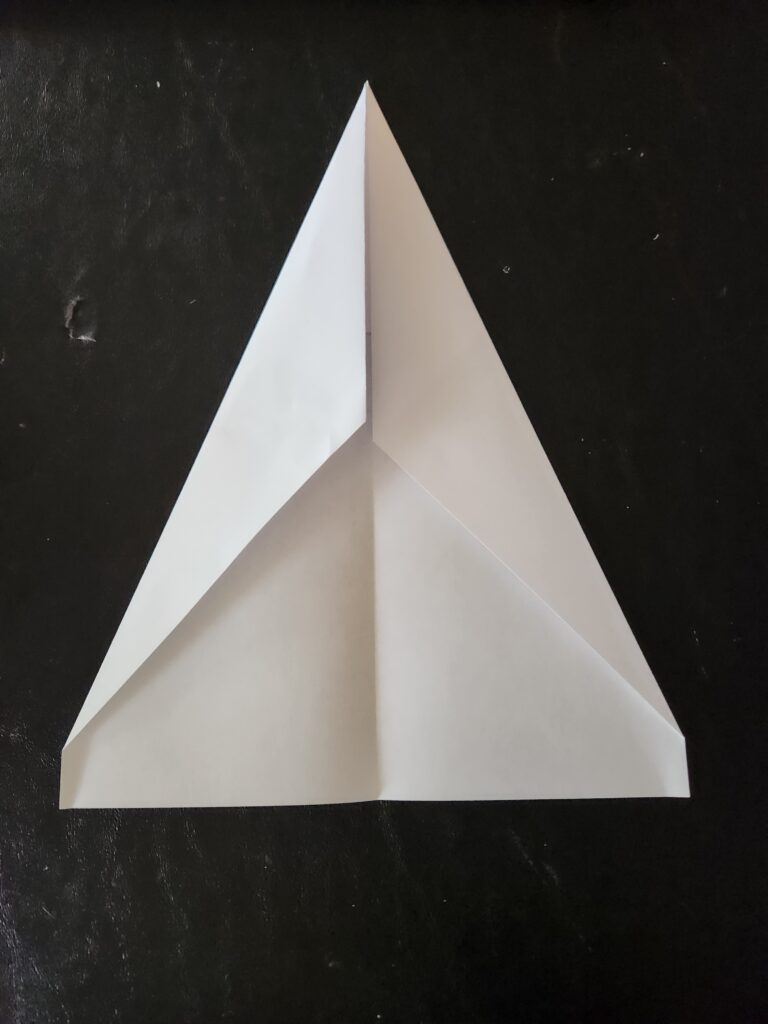
Then, fold the top edges down to the center crease again.
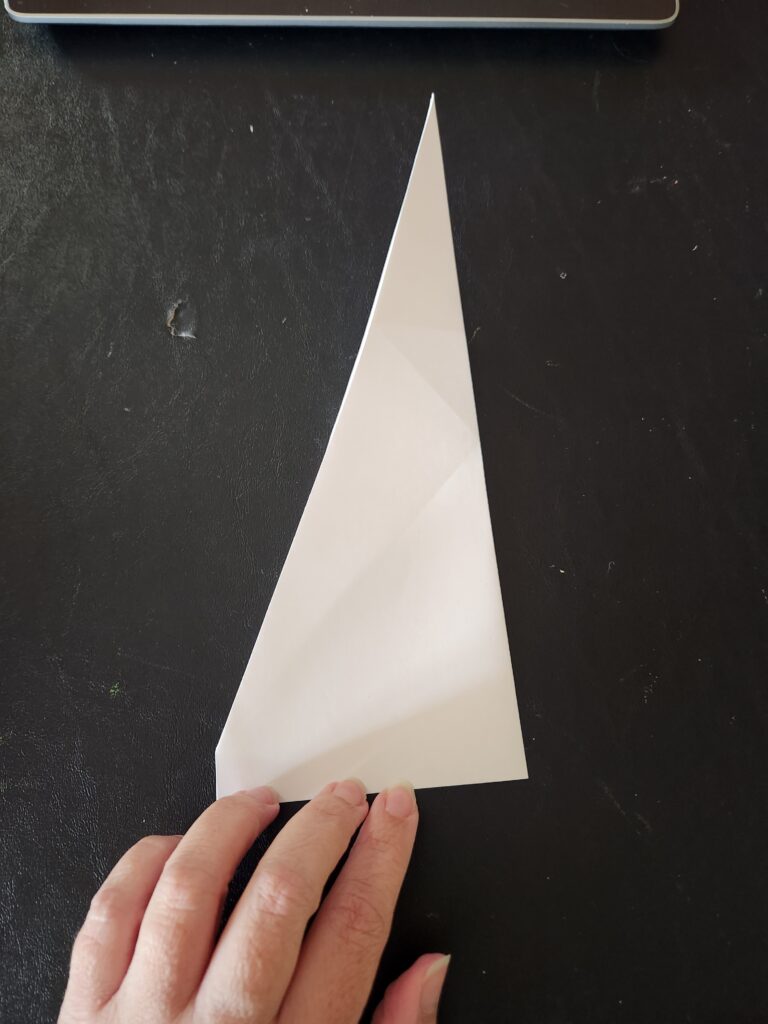
Once again, fold the plane in half lengthwise.
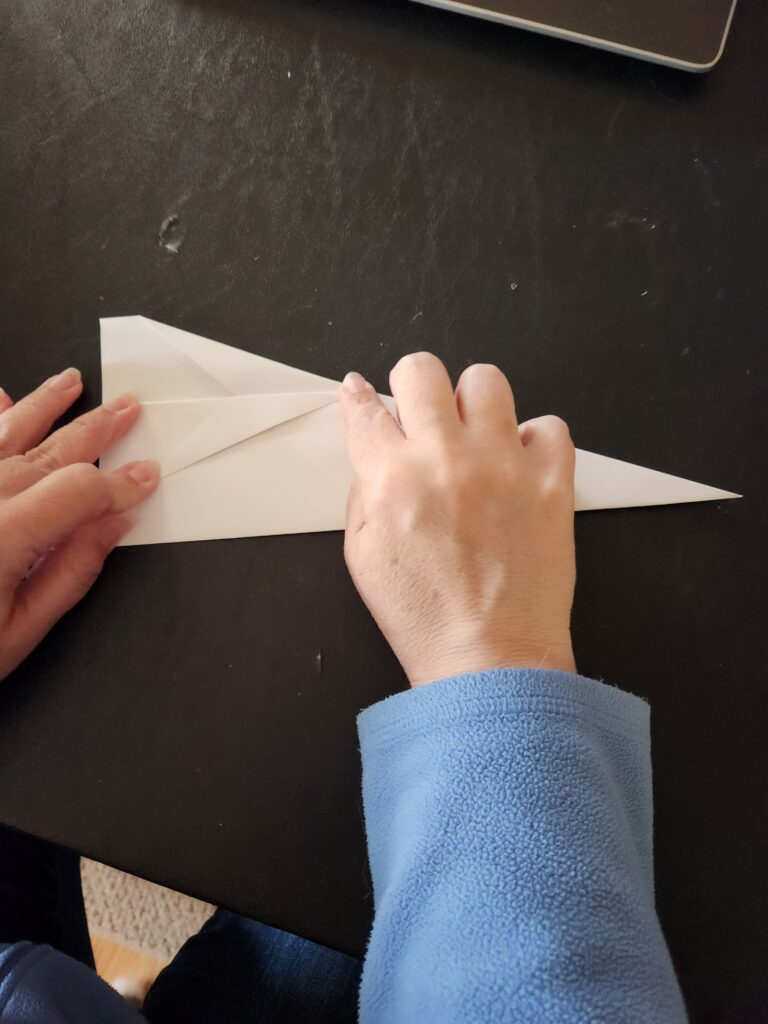
Fold the wings out at a slight angle on both sides. You can use some tape, it you want, to tape the end of the plane together. I didn’t.
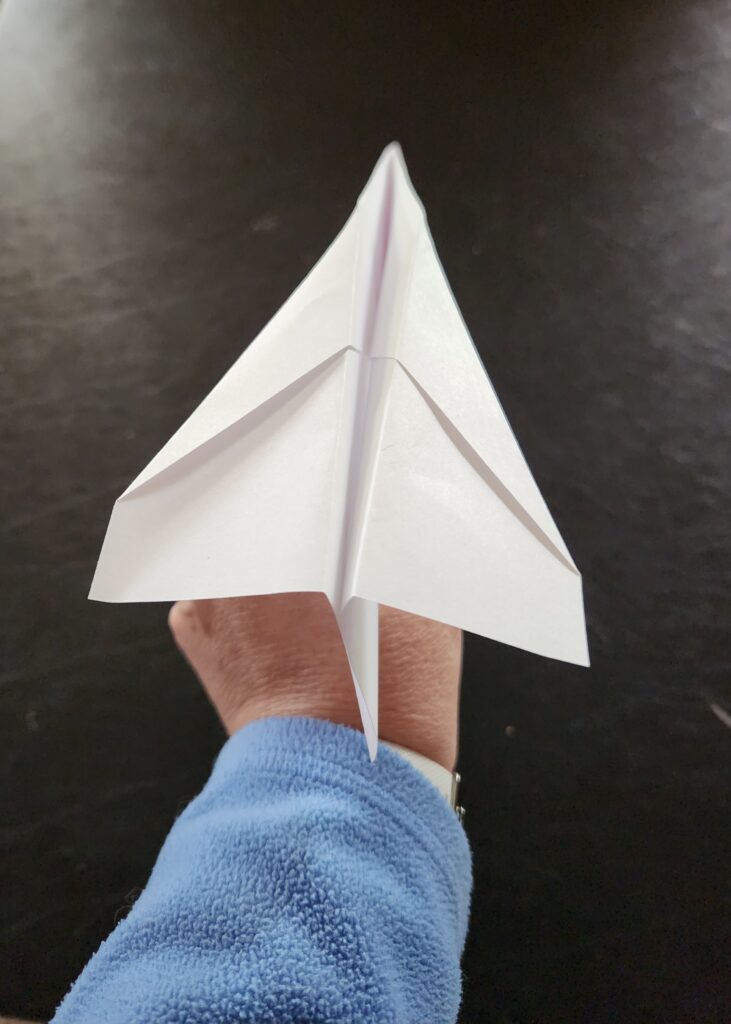
Your paper airplane is now ready to fly!
To fly your plane:
Hold the plane by the nose and give it a gentle toss. Adjust your throw to get the plane to fly as far or as long as you want.
You can also decorate your paper airplanes with markers, crayons, or other art supplies.
Here are some additional tips for making paper airplanes:
- Use high-quality paper. The type of paper you use will make a big difference in your plane’s flight. Use smooth, lightweight paper that will not tear easily.
- Make sure your folds are sharp. Precise folds are essential for a well-flying paper airplane. Use a ruler or a straightedge to help you make sharp folds.
Variations:
There are many different ways to fold a paper airplane. You can try making different plane designs once you have the basic design down.
Check out Origami Way and get some ideas on how to fold paper airplanes. They give several different designs and rate them on how well they fly for different purposes (distance, air time, stunts, etc.).
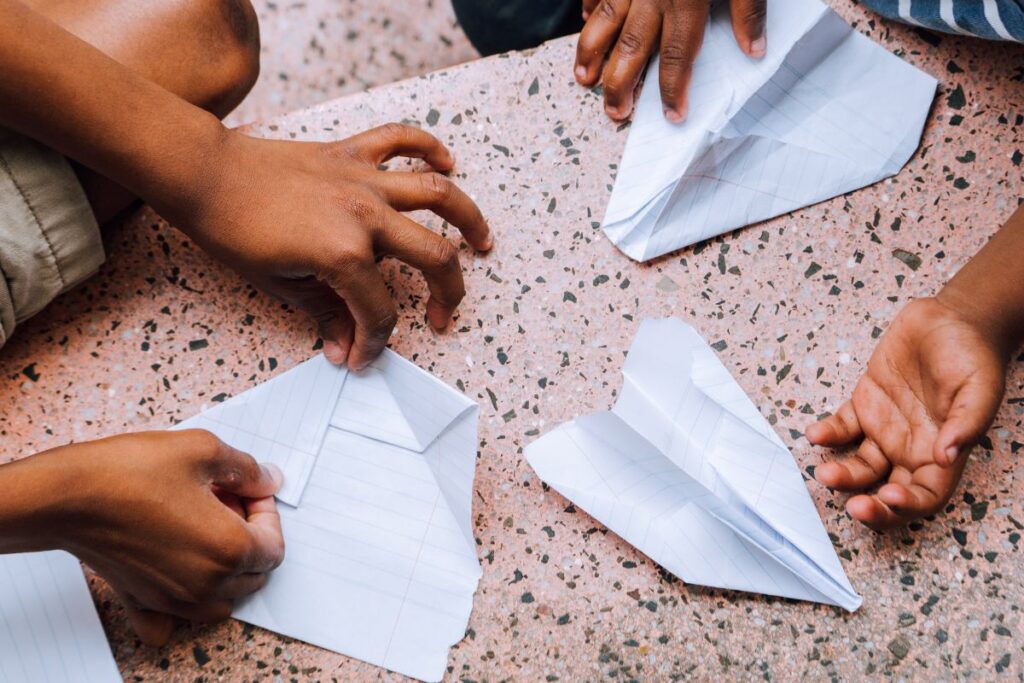
However, for a more challenging STEM activity, have kids design their own paper airplanes and test them to see how far they can fly.
{RELATED: Cool Catapults, Lego Balloon Cars, and STEM Zipline Challenge}
Paper Airplane STEM Challenges
For all of these challenges, kiddos need to pick paper airplane designs they think will work best. So, if one design doesn’t work well, have them try another.
Let’s get started with some paper airplane STEM Challenges.
#1 Build a Paper Airplane that can Carry a Payload
This activity is a fun challenge for kids. Have them design a plane carrying a heavy object like a coin or a marble. The goal is to make a plane that can fly as far as possible while still carrying the payload.
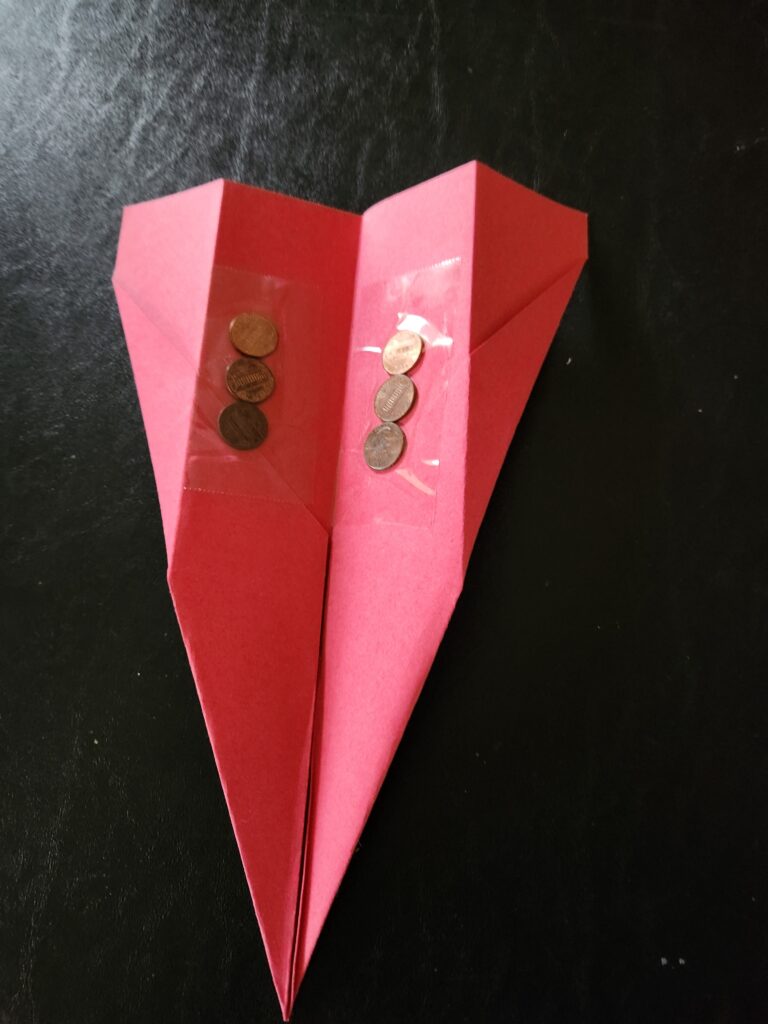
Another idea is to see HOW MUCH payload the paper airplane can hold and still fly. We have done this by using the basic paper airplane design described above.
We used construction paper and kept adding coins to our planes until they couldn’t fly.
When we did this, my kids were in the early elementary and mid-elementary age range. Because we stuck with the basic airplane design, it made things easier.
#2 The Longest Flight Challenge
This challenge is about seeing how far your paper airplane can fly. To play, simply launch your paper airplane and see how far it goes. The player with the longest flight wins!
Incorporate some math by having the kids measure the distance, record the results on a table, and then graph the results. Then with older kids, they could even practice finding the mean, medium, and mode.
#3 The Accuracy Challenge
This challenge is all about accuracy. To play, draw a target on the ground and launch your paper airplane at it. The player who hits the target the most times wins!
If you are indoors (or don’t have a paved driveway to draw on) q, you can put down a sheet of paper, a laundry basket, or a hoola hoop.
#4 The Design Challenge
This challenge is all about creativity. To play, design your own paper airplane and test it to see how far it flies. The player with the best design wins!
You can add a little more fun and rate designs on other things like best stunts, coolest looking, fastest, etc.
I have a fun STEM Journal and STEM Worksheets that are perfect for helping kids work through these different STEM airplane challenges.
They can sketch designs and work through the STEM process to assess what works and what doesn’t work and why. See what you think. Click one of the images below.
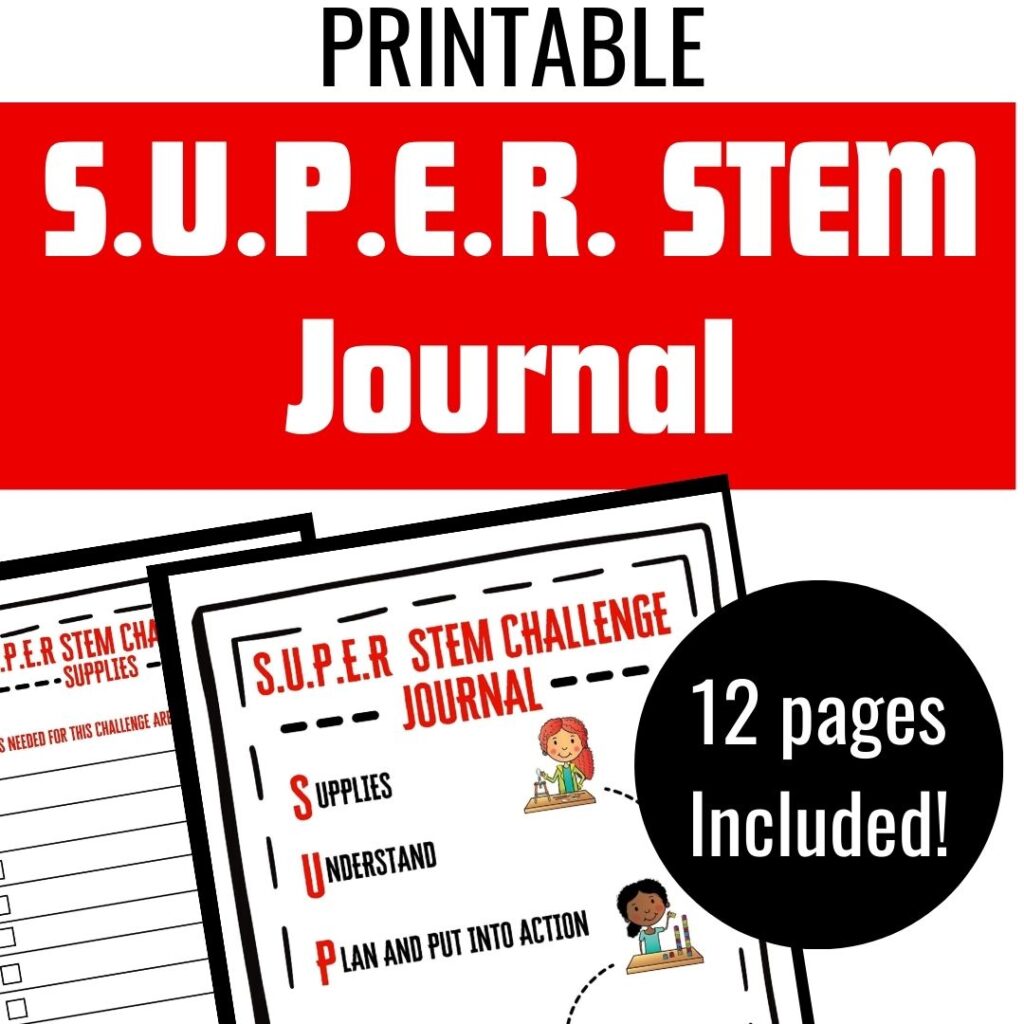
The Science Behind Paper Airplanes
Now that you’ve built some airplanes and maybe found a good design, it is time to look at paper airplane science.
What science does all this flying paper teach?
- Aerodynamics: Paper planes can teach kids about aerodynamics, the study of how air flows around objects. By experimenting with different paper airplane designs, kids can learn about the different forces that affect flight, such as lift, drag, and gravity.
- Gravity: Paper airplanes teach kids about gravity, the force that pulls objects towards the Earth. Launching paper airplanes from different heights allows kids to see how gravity affects their flight.
- Lift: Lift is the force that allows planes to fly. It is created by the shape of the wings and the way that air flows over them. By experimenting with different paper plane designs, kids can learn how lift is created and how it impacts their planes.
- Drag: Drag is a force that acts on a plane that slows down the plane as it moves through the air. It isn’t necessarily a bad thing. If a plane is going too fast, drag helps slow it down.
By experimenting with different paper airplane designs and flying them from various heights, kiddos can better understand these physics concepts related to aerodynamics and how they apply to planes and other flying objects.
Paper airplane science can make complicated concepts easier to understand since kiddos actively experiment with the ideas.
As you can see, paper airplanes are a fun and educational way to spend time with kids. With just a few simple materials, you can create a variety of paper airplanes that can be used to explore STEM concepts. So get folding and start flying!
Happy Homeschooling!
**Don’t forget to check out my The Secret Life of Homeschoolers Shop!**

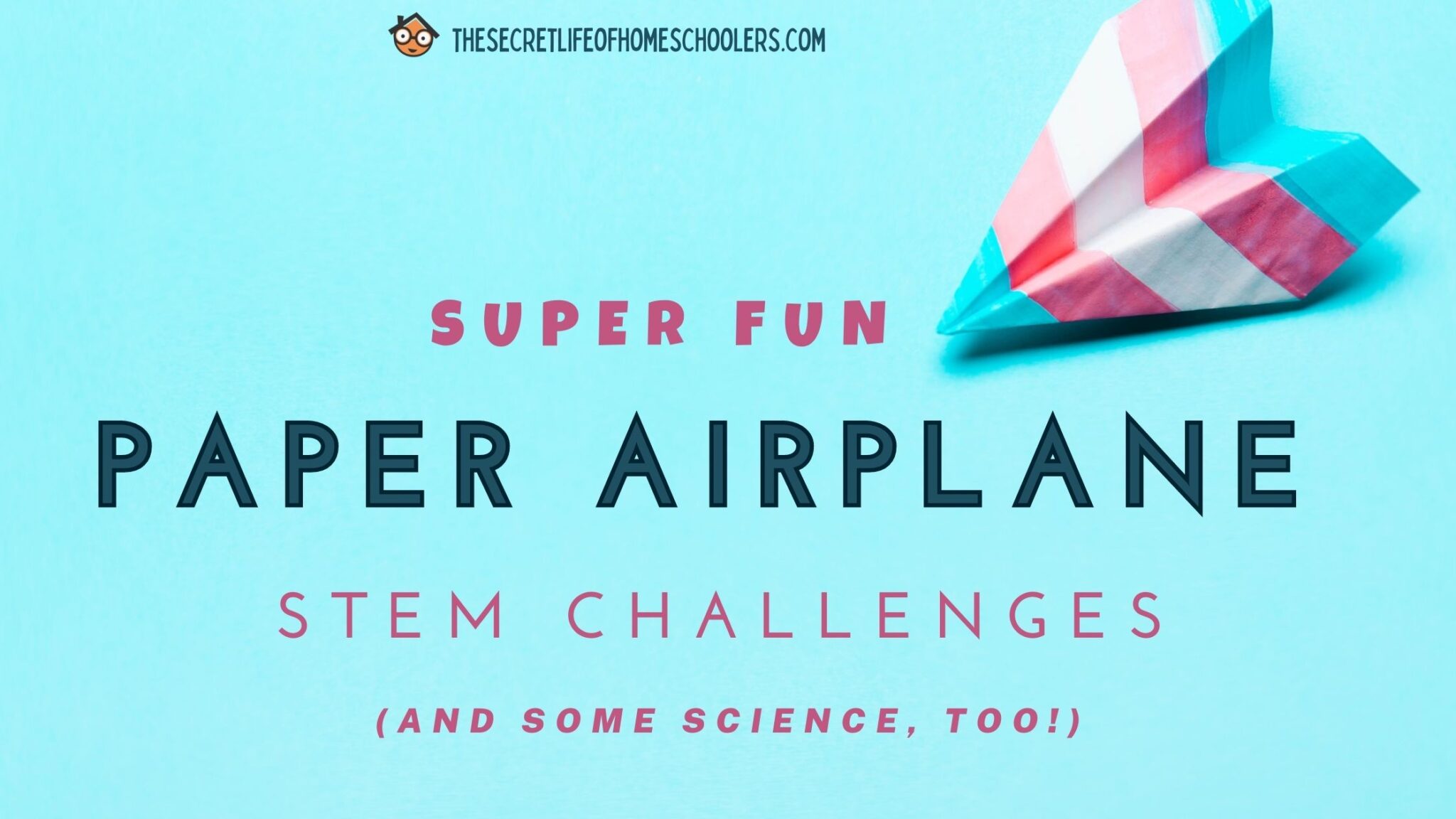

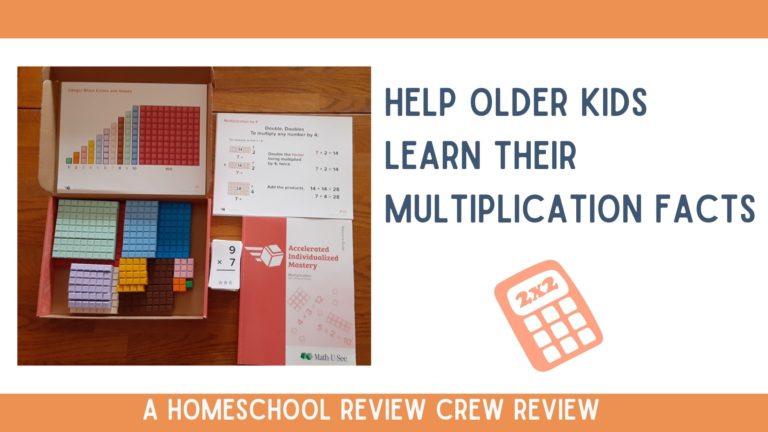
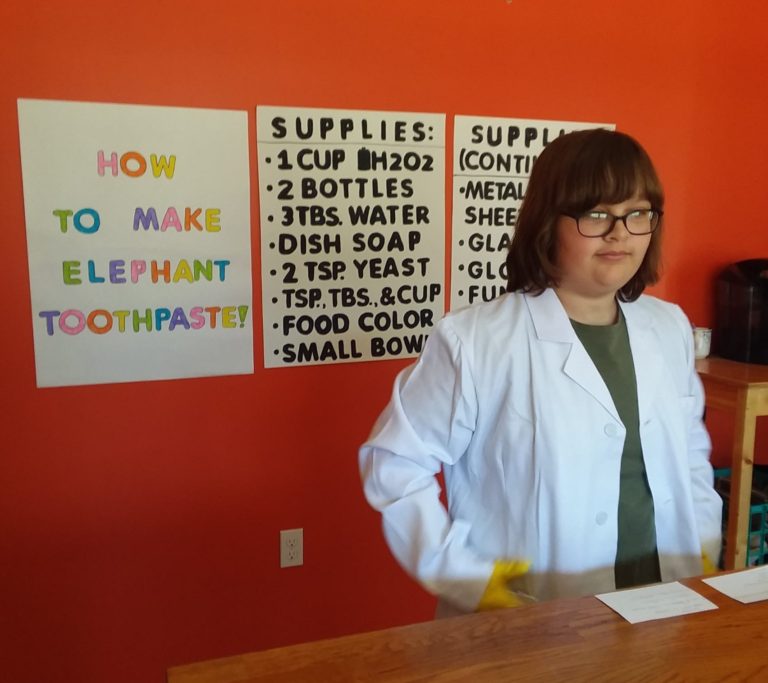
Love it, love it! Today happens to be National Paper Airplane Day, too!
That’s funny. I didn’t know there was a National Paper Airplane Day. Thanks for letting me know. I’ll have to keep it in mind each year to share this post!